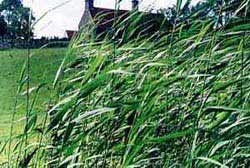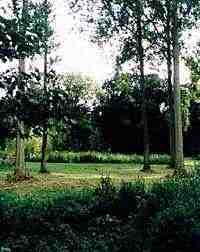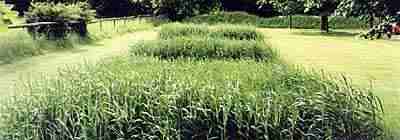 |
 REED BED TREATMENT SCHEMES |
|||
| Reed
Beds are an excellent natural and attractive method of
treating domestic, industrial and agricultural organic
liquid wastes. A Reed Bed is an engineered method of purifying polluted water as it passes through an artificially constructed Wetland area, usually containing the common Reed (Phragmites australis). Reed Beds are an effective and reliable method of dealing with:
|
||||
 |
||||
| D.H.A.
Pollution Control is among the leaders in design and
construction of Reed Bed Treatment Schemes and have
numerous thriving schemes within our portfolio. The precursors to the Reed Bed were Withy Beds. These were used in Victorian times to treat the liquor from sewage effluent. |
||||
| The use
of constructed wetlands such as Reed Beds has become
popular due to their ability to break down many organic
wastes whilst providing an opportunity to improve the
local environment. Reed Beds can match the efficiency of sewage treatment works in terms of treatment capability. The sewage is broken down into carbon dioxide and water and is released to the atmosphere. It is important to appreciate the role Reed Beds have on the Pollution Control Industry. The first interest shown in this form of treatment occurred in the UK in 1985. Reeds Beds are now used to address industrial pollution such as mining and factory waste water together with village and domestic effluent treatment schemes. Water Authorities, District Councils, Nursing Homes, Hotels, Caravan and Recreational sites and single domestic end-users are now using Reed Beds to cater for their sewage treatment requirements. The Reed Bed is an engineered method of treating pollutants using a biological planting containing typically the common read, Phragmites australis. The reeds pass oxygen, absorbed by their leaf system, via their stems and rhizomes to their roots - the Rhizosphere. Polluted water passing around the roots is purified by the immense population of micro-organisms living in the Rhizosphere. The use of Reed Beds in environmentally sensitive discharge areas is becoming more widely established. The lack of dilution within a receiving watercourse is normally a major factor in the environmental impact caused by a discharge. However, due to the benefits of evaporation and transpiration which happens along the Reed Bed, very little, if any, discharge occurs during the summer months. Reed Beds are able to cope with flow surges and are suited to seasonal applications to the benefits of evaporation and transpiration. Reed Beds are not only cheaper to operate than other treatment methods, with minimal maintenance and no electrical costs. They may actually save money by cleaning wastewater to the extent that it can be recycled, thus cutting water bills. Their applications are divers, offering secondary and tertiary treatment of domestic sewage, particularly for small villages, hotels, service stations, caravan sites, agricultural effluent in the form of "dirty water" and industrial process effluents. |
||||
| When
used in industrial applications they can enhance the
landscape and attract a variety of fauna to an otherwise
bleak area. Whilst effectively removing pollutants the
Reed Bed also provides a valuable habitat for wildlife,
the lush reeds attract insects which in turn support
birds, mammals and other animals. Reed Bed schemes have proved to be an effective, sustainable, reliable and economical method of treatment, whilst environmental issues are appreciated in creating an aesthetically pleasing solution to a pollution problem and in doing so creating a new natural habitat for species of wildlife and promoting conservation. A typical established Reed Bed can support reed, marsh and sedge warblers, reed bunting, wagtails, wrens and bearded tits. Harvest mice, voles and an extensive range of invertebrates may also be found. |
||||
To see a project
through from start to finish click
HERE  |
 |
|||
| D.H.A.
can offer a complete service including an initial site
inspection with feasibility study, design and
specification to construction, landscaping and
maintenance. |
||||
| Further
details are available on request from: DHA Pollution Control Woodlands 4 Holly Close Alveston, Bristol BS35 3PW 01454 418880 |
||||
 |
||||
